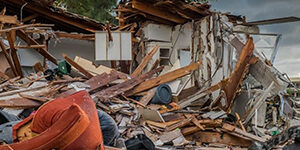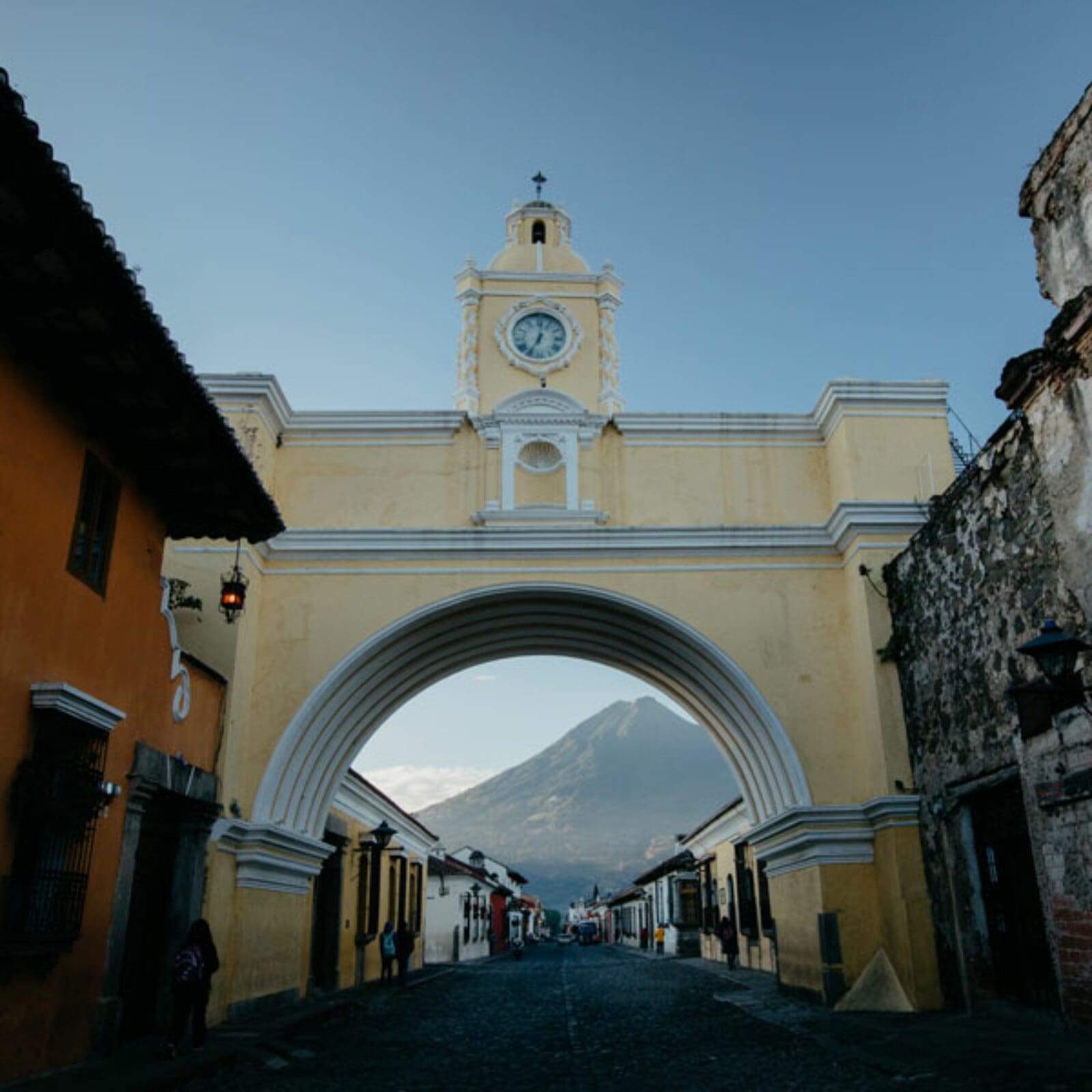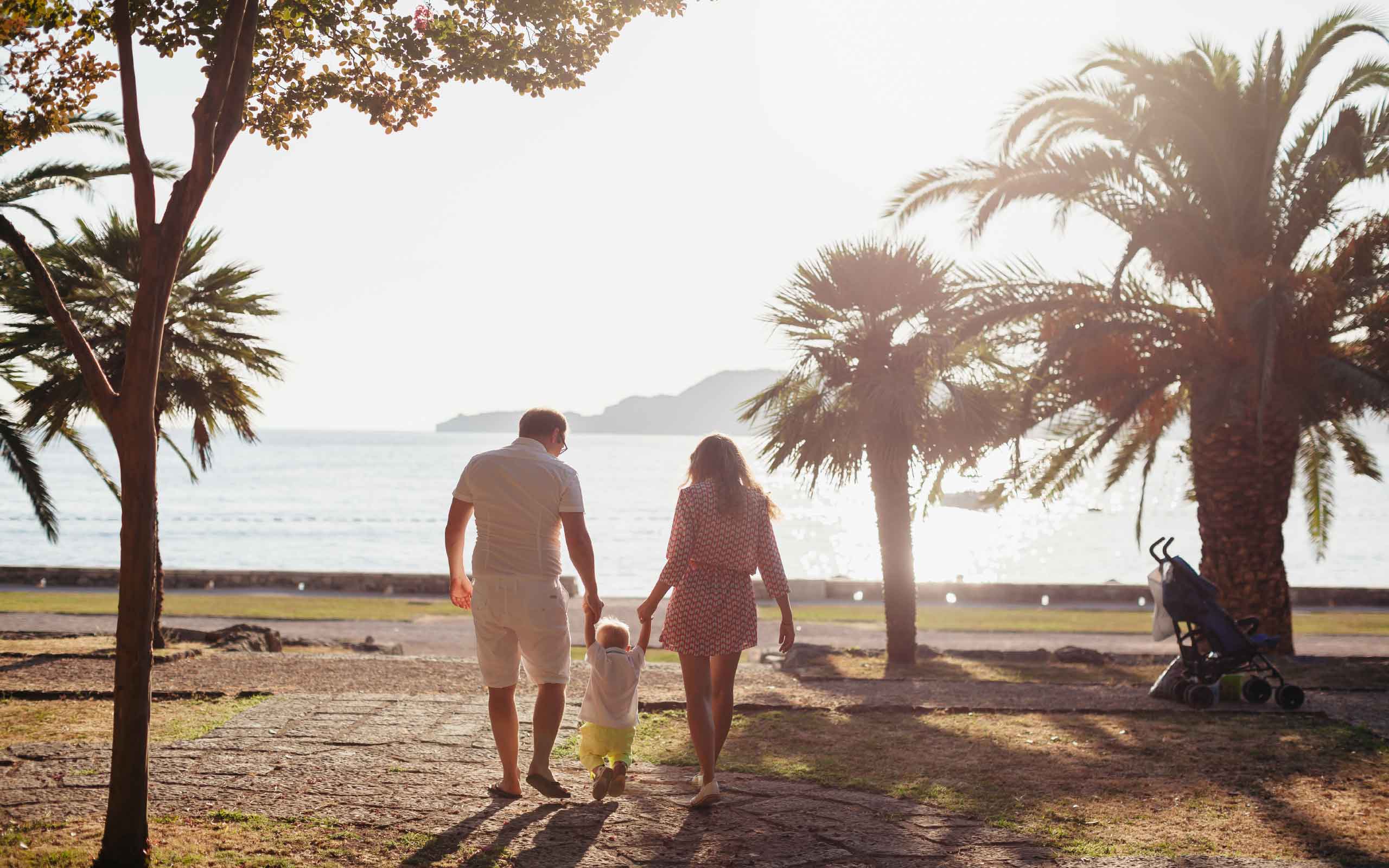Listening to: “Strong Tower” by Kutless
Greetings from San Felix, Panama! We are stationed here, helping some missionaries who have a ministry with the indigenous people of the mountain outside of town.
There are special pickup trucks that go up and down the mountain every day. The beds of these trucks have been converted in a unique way, with an open steel cage tall enough to sit beneath. There are two benches—one on each side—that hold ten people comfortably; though, it can hold a whole lot more if people squeeze in tight.
The top of the steel cage is used to carry cargo, and when you’re riding around, you tend to notice empty buckets rolling around up there. Well, when you have a lot of people to haul (think 20+ people), you can pull the buckets down and use them as seats between the two benches. That makes for a really tight squeeze.
Finally, there’s a spot for two people to stand outside the tailgate. So they’re at the very back of the truck, standing on this ledge while hanging on to the tailgate. This is illegal in town, but people do it all the time on the mountain; so these men wait until we’re just outside the city limits, headed up the road that leads to the mountain, before they actually swing themselves out onto the back of the truck.
All of this allows an awful lot of people to be in the truck at one time. The other day, we counted twenty-one total, including the driver and all the people piled into the cab of the truck.
This probably seems dangerous, and we honestly wondered how we were going to make it up the mountain that day (especially when we realized someone was transporting a machete in the back of the truck with us), but this kind of thing a way of life in these countries—not just here in Panama, but all throughout Latin America. It’s like wearing seatbelts back home. You just do it. There’s no question about it. We have a culture of seatbelt-wearing at home. Well here, they have a culture of piling a lot of people into pickup trucks, and that’s how you get around.
Pastor Alex Taylor and his wife Mimi have been our hosts in San Felix. They are Costa Rican, and when we arrived, they paired us up with the two other Costa Rican missionaries who are in charge of the jungle ministry up in the mountain. Their names are Mau and David, and they are AWESOME. Each day, they go up the mountain to bring the Gospel to the people of two villages: July (pronounced HU-lee) and Nancito (nahn-SEE-toh).
The children are the primary focus of this ministry, but they do have Bible study (Saturday) and church service (Sunday) for the adults. It’s been really awesome and very educational helping Mau and David bring Jesus to these people.
The kids aren’t quite as active as we’re accustomed to. They just kind of sit and stare whenever we try to engage them with songs or conversation—but we were told upfront that this culture was going to be challenging. The children have no hope without Jesus—it’s a situation of young girls (still children, really) having children, and there are a lot of broken, fatherless homes in these communities.
It’s no surprise they are wary of strangers, but it feels like they’ve been slowly warming up to us, and I can see where we’ve made progress in certain areas.
So here’s what an average day looks like when we’re helping with Mau and David’s ministry:
-
The mountain truck picks us up at 9:00 a.m.
-
The ride up the mountain takes twenty to thirty minutes, depending on which village we’re going to (Nancito is Mondays and Tuesdays, July is Thursdays and Fridays). The road is extremely rough, with huge patches of concrete ripped up and worn away. It’s a very bumpy ride that jars us around most of the time. And although the benches we sit on have padding for your back, I’ve walked away feeling like my lungs and kidneys were going to be bruised.
-
The dropoff point at July requires a short hike to reach the “school” where Mau and David teach. It’s pretty primitive, just an open patch of jungle, no building, with some long wooden planks placed on the ground for the kids to sit. There’s no desk, no blackboard—David and Mau have to hold all the pictures and props they’re using for presenting the Bible stories.
-
Nancito is a bit more advanced, with proper benches and an aluminum roof covering an otherwise open cement gazebo-type structure. That location even has a podium for sermons and large bulletin board for Mau and David’s presentations. However, the community is a lot more spread out across the jungle here; so when we go to Nancito, we have to go hiking for about forty-five minutes to an hour to gather the children and families. (They don’t have any concept of time or future-planning on the mountain. See below for more info on this.*)
-
We’re usually ready to get started around mid-morning. Mau and David like to start with a numbers game, getting the kids warmed up and having fun as we wait for more people to arrive. We’ve been helping by playing with the kids, interacting with them, and singing the songs that go along with the game.
-
In addition to games, we lead the kids in songs. Megan taught them a Christian song called “Escalator,” I taught them “1, 2, 3 Pescaditos,” and we also did a Spanish version of “Itsy Bitsy Spider.”
-
After games and songs, Mau and David start the lesson. They teach for about an hour, making it as interactive as possible by posing questions and using props and pictures to demonstrate what they’re talking about. One of the lessons, for instance, was about Solomon and how he asked for wisdom so as to rule God’s people justly and fairly. Mau asked the kids what they would ask for if God came to them the way He had come to Solomon. A lot of the kids said shoes, clothes, and money. Honestly, that’s probably an answer a lot of kids would give no matter where they’re from. Shoes, clothes, and money are some of the top birthday and Christmas gifts in America…but when you see that these kids don’t have shoes, or that they’re wearing shoes far too small for their feet—when you see their clothes are tattered and worn and dirty and that they have no money to buy new ones—that seemingly common answer takes on a whole new context.
-
After the lesson, we close with a final game and then line the kids up for lunch. Mau and David provide the food each day, but we don’t stay and eat. Supplies are very limited, and they don’t usually have enough cups to go around, let alone food. So we start packing up to go back down the mountain.
-
The pickup truck doesn’t like to wait, so we have to be ready to go pretty quickly; but there are times where we end up having to wait around for a while. That’s another aspect of Latin culture. People are more laid back in many of these countries, and when they say they’ll be somewhere at 12:30, it’s not uncommon for them to show up at 12:45, 1:00, or even later. We had to wait for almost an hour the other day when we were waiting for the truck to pick us up, which was unfortunate because had we known, we could have spent more time with the kids. But the kids were long gone, and we had already hiked to the dropoff point for the truck.
-
Once the truck picks us up, it’s another twenty- to thirty-minute, crazy-bumpy ride down the mountain. Sometimes the truck drops us off at the house, sometimes it drops us at the station where all the pickup truck station (where all such trucks are parked and ready to take people up the mountain).
*In reference to the people of the Ngope Reservation not having any concept of time: David explained that they don’t have clocks or watches there, and they don’t practice planning ahead. For instance, David and Mau can’t just tell them, “We’re having a kids program every day this week.” By the following day, they will have forgotten. The only way they do know the approximate time is by external conditions and happenings around them—for example, there’s a bus that goes to a certain point on the mountain. If they see that bus, they know it’s (around) 9:00 a.m. Other than that, they would never know it’s nine in the morning.
As primitive as some of this sounds, I can’t stress enough how much I LOVE THIS MINISTRY and this one-horse town called San Felix. Mau is returning to Costa Rica for a the last-half of the month, and I don’t know if we’ll be doing jungle ministry with David or not. I really hope we will be, that we can have more of a hand in the preparation of it, and that we’ll be able to continue bringing the Light of Jesus to children who badly need it. Pray that we will! And more prayers for health and safety are also very much appreciated.
That’s all for now. Writing to you from the beautiful and intriguing country of PANAMA! PANAMA-AH-AH-AH! 🙂
For those still awaiting highlights from Ecuador, hang tight. That post is coming soon.
I see God moving across the deserts from Edom, the Holy One coming from Mount Paran. His brilliant splendor fills the heavens, and the earth is filled with His praise. His coming is as brilliant as the sunrise. Rays of light flash from His Hands, where His awesome Power is hidden. Habakkuk 3:3-4







